Nicole Riegel and Adam Cobb come together to 'Holler' their support for film
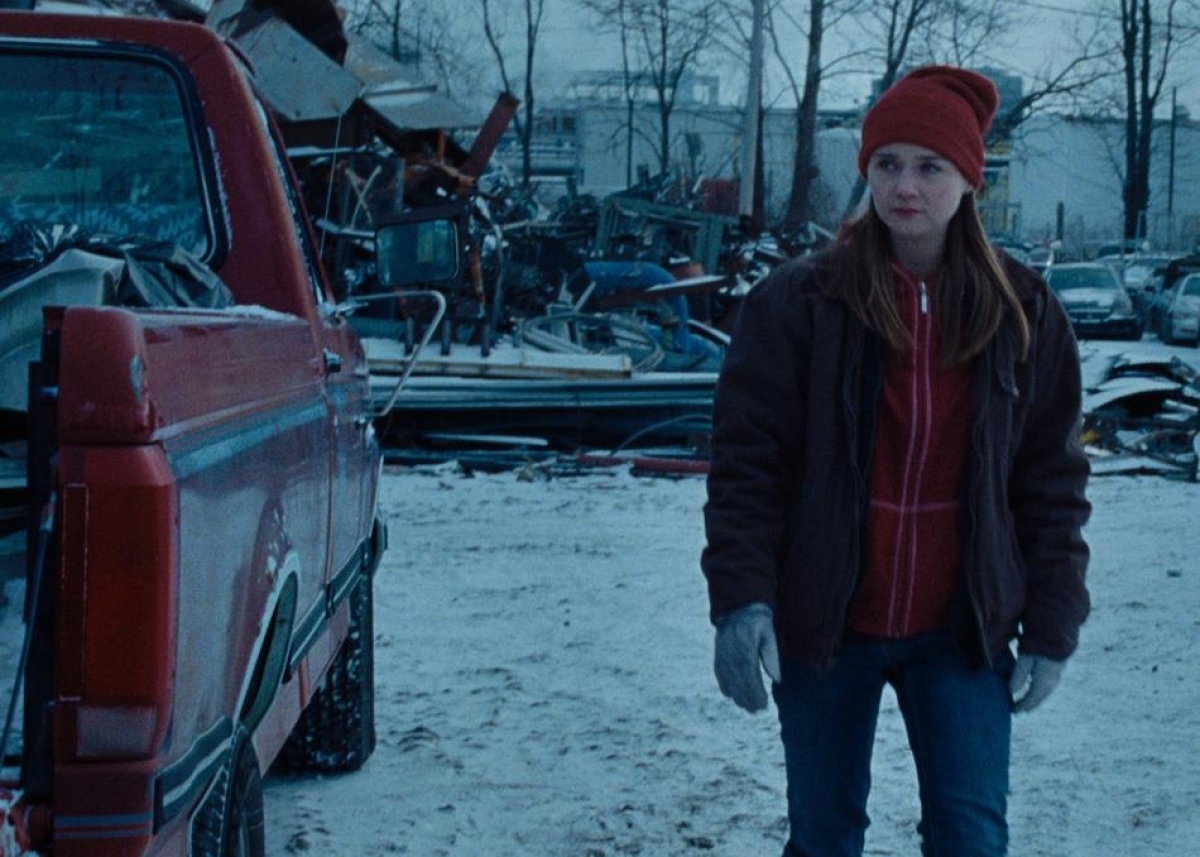
The red of the truck and beanie emphasize Ruth (Jessica Barden) being out of place in her environment.
Even though Holler shares the same name as the short film that writer-director Nicole Riegel made back in 2016, the feature length version being distributed by IFC Films, and produced and financed by Level Forward, with Hunting Lane Films and Feigco Entertainment tells a different story within the same Ohio setting. “To me, they’re totally different films. But the biggest learning point was how to film in an operational scrapyard. There are so many safety precautions that I wouldn’t know where to begin, and so many ways you can get hurt or killed. We somehow left that production with all of these connections to the scrap world and even more with the feature. I also learned that I didn’t like shooting on digital very much. I was able to test out and experiment with my visual preferences on that short. The short was about two boys but it didn’t feel personal to me when I went to an adaptation as a feature. I had to start from scratch and ask, ‘What is the real personal story that I’m connecting to here?’ It led to wanting to tell a story about my own pursuit of an education as a young woman. When I boiled it down to that point, it started a whole new film.”
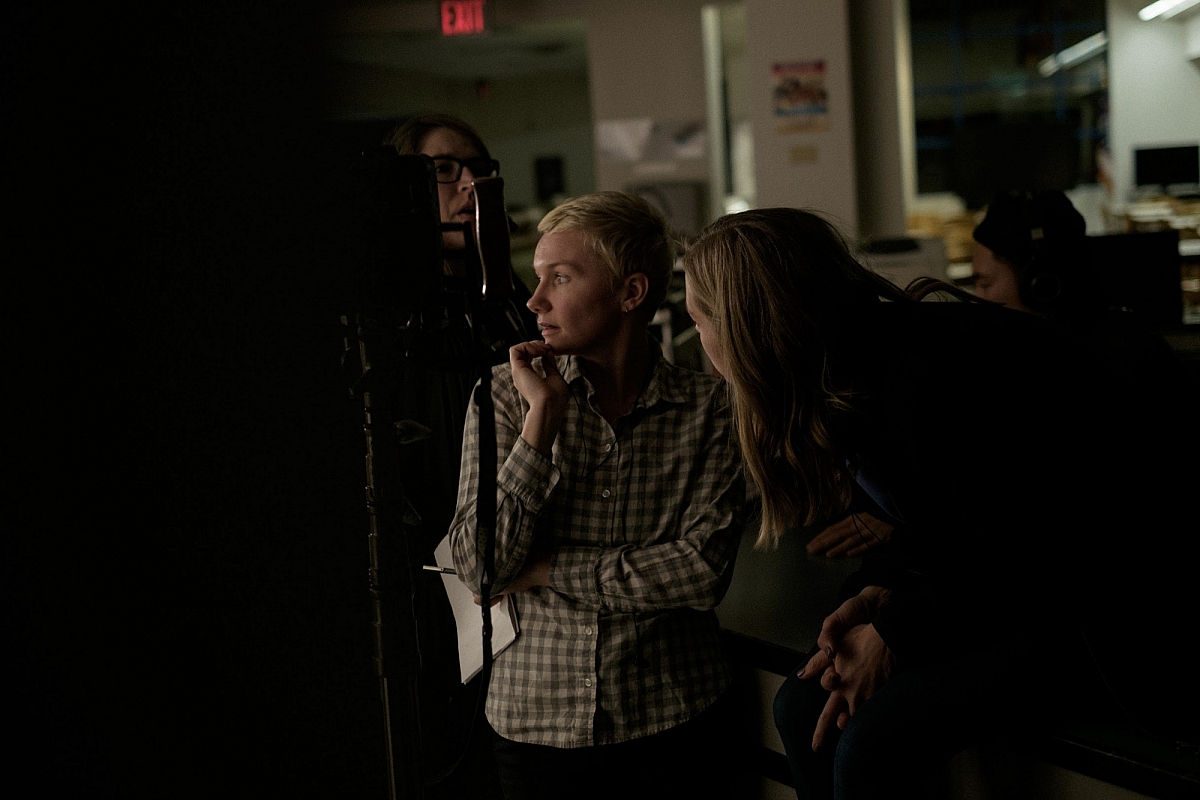
Nicole Riegel cut back on the number of principal photography days to enable Holler to be shot on 16mm filmstock.
Holler revolves around Ruth (Jessica Barden) risking her life and jailtime by scavenging for scrap metal in order to pay for her postsecondary education. A real-life high school incident with a discouraging guidance counselor and an image of a young woman running surrounded by a desolated industrial landscape were narrative cornerstones for Riegel. "It’s funny that you mentioned the image of the girl running because that’s how every project begins for me is with an image; nothing is really written. I ask myself, ‘How is there a story around this space?’ Usually, some sort of character emerges and I can start building a story. I almost immediately know how the camera should move even when there is no structure at all.” Color is an important part of the storytelling. “Red is a symbol of Ruth’s passion and that she doesn’t fit in her environment. I wanted to show that through color, and if I can show things visually, I’d much rather do that than with dialogue. Our wonderful costume designer [Ciara Whaley] and I worked hard from the beginning on the progression of color in the film. The maternal figures around Ruth were more subdued or darker, like burgundies. We did the same thing with her brother Blaze [Gus Halper] with the blues. As the film progresses the red shifts a little bit except for that red beanie. Ruth takes on Blaze’s colors when she leaves.”
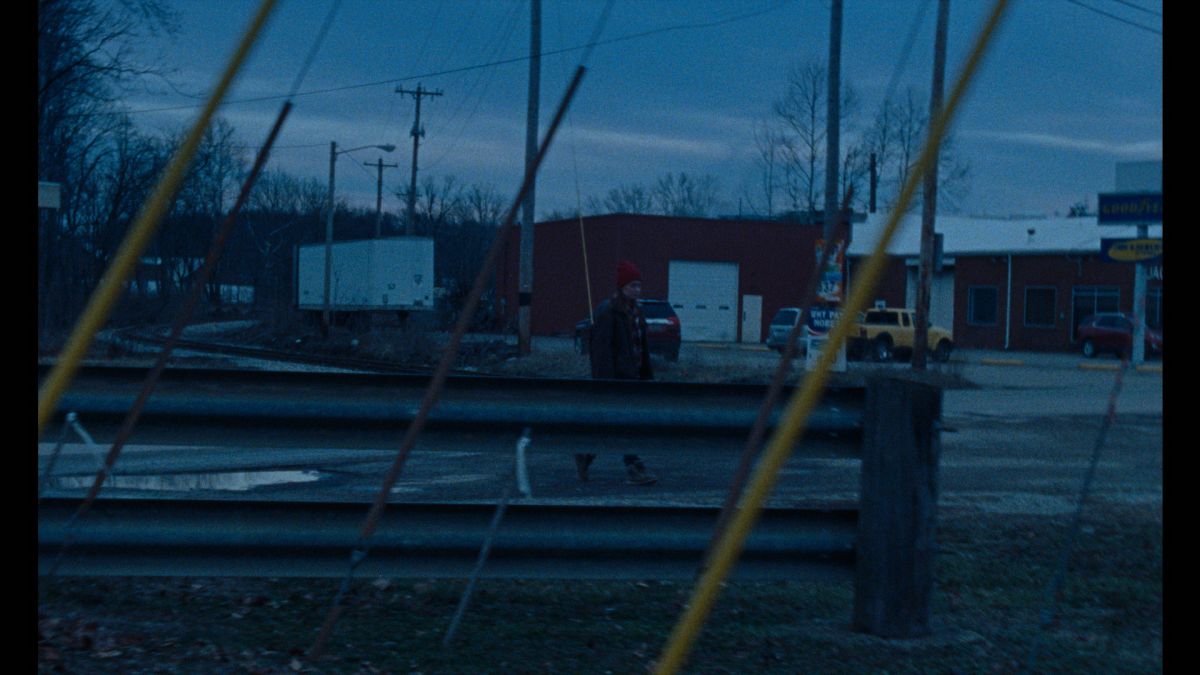
In order to capture the true nighttime environment of Southeastern Ohio, the decision was made to shoot on film and to use minimal artificial lighting.
Unlike the short which was captured on a Panasonic Varicam35 by Mike Gioulakis (Under the Silver Lake), Dustin Lane (Dayveon) utilized an Arriflex 416 camera and T1.3 Zeiss Ultra 16 Prime Lenses (6mm - 50mm) for the feature. The decision to shoot on 16mm KODAK VISION 3 200T and 16mm KODAK VISION 3 500T Color Negative Films was an easy one for Riegel; however, the producers required some convincing. “Film is something that I’m passionate about especially 16mm. I met a lot of producers who said ‘no’ to film and I simply didn’t work with them. I hear a lot from my peers that, ‘The producer wouldn’t let me shoot on film.’ I think that you don’t let yourself shoot on film. It means that you cannot do other things in your budget. I certainly didn’t have enough days to make the film but that was my choice. I wanted 16mm because of the aspect ratio, and it’s a movie about a people and place that feel left behind. To me nothing feels more abandoned or left behind than 16mm.”
There was a three-day turnover for dailies by FotoKem. “It was something that I went into accepting,” notes Riegel. “It doesn’t make me panic. It makes lots of other people panic. I like having to develop film and not knowing what I’m going to get; that is scary for those investing millions of dollars in an independent film but it is what it is. The thing that can eliminate a lot of that uncertainty is your preparedness, storyboarding, and shot listing; if you’ve done all of that right then I don’t think you have a lot to worry about.” The imperfections associated with film were part of the overall aesthetic. “We were cleaning the film and I got upset. I was like, ‘Lets leave some of the dirt.’" The aspect ratio for the drama is 1.66:1. “I wanted it to feel portraiture first of all. 16mm always feel portraiture. I still wanted the expanse of the place. It was easy to pivot to 16mm. I was even storyboarding in that aspect ratio. We did play with cropping but I didn’t like it for the film.” The color palette was tweaked during the DI. “We wanted true colors for this. Philip Beckner [The Lovebirds], the colorist at FotoKem, did a fantastic job; the only thing that we touched up were the red on the truck and on Ruth’s hat to make it pop a little more. Everything else was subtle.”
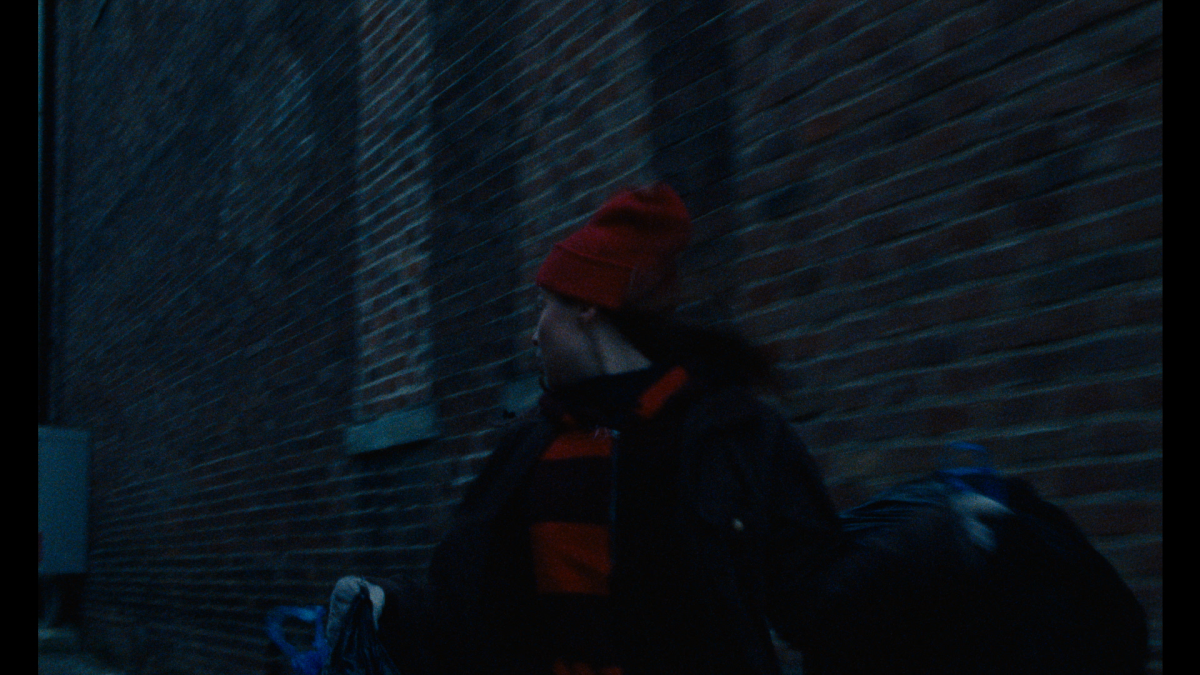
The first image that Nicole Riegel envisioned when conceiving the story for the feature version of Holler serves as the opening sequence.
A roaming documentary approach was taken with the focus placed upon following the protagonist. “Handheld is beautiful,” remarks Riegel. “I never wanted it to feel like we’re doing these huge setups. I wanted to stay on the pulse of Ruth and of this environment. I like to make rules before we film so that I don’t get too crazy with the camera. That was another lesson that I took from the short film. I didn’t make rules so I did all of these crazy shots that didn’t add up to a cohesive vision. One rule for this was that we would stay on the pulse of Ruth. Even if during a party scene she had no dialogue, we’re still with her. The sound of her breath and footsteps was also important. Hands were important because this is a place where there’s lots of manual labour and people are still working with their hands. We wanted to remind people of this part of the country that it’s still happening.” A discussion took place as to whether the nighttime scenes should be captured digitally. “When you are in Jackson, Ohio or anywhere in southeast Ohio at night, it is pitch black. It was a bold choice to say, ‘We want to do this on film at night. When it’s dark, let it be dark. Let’s not use a lot of artificial lights.’ There were times where we had to break that rule for important emotional scenes between Ruth and Blaze, and use lights.”
Principal photography lasted 19 days in Jackson, Ohio (Riegel's hometown), Chillicothe, Wellston, and Bainbridge with producer Adam Cobb (The Autopsy of Jane Doe) doubling as the location manager. “The bigger locations like the food factory and scrapyard, we formed strong bonds with people who ran those places,” states Cobb. “They were open to our schedule shifting all of the time and having to come to do night shoots. At the same time there were peripheral locations that we couldn’t figure until we got down the ground in preproduction. Originally, we were going to shoot in the summer and then it moved to winter. Certain locations changed depending on the weather and others fell through. I literally had four hours to drive to any sort of industrial place nearby to look at the breakrooms, send photos to the whole team, and ask, ‘How about this one?’ Finally, I ended up going to this auto glass place and was put in touch with this guy who was managing it. It turned out that he went to high school with Nicole!”
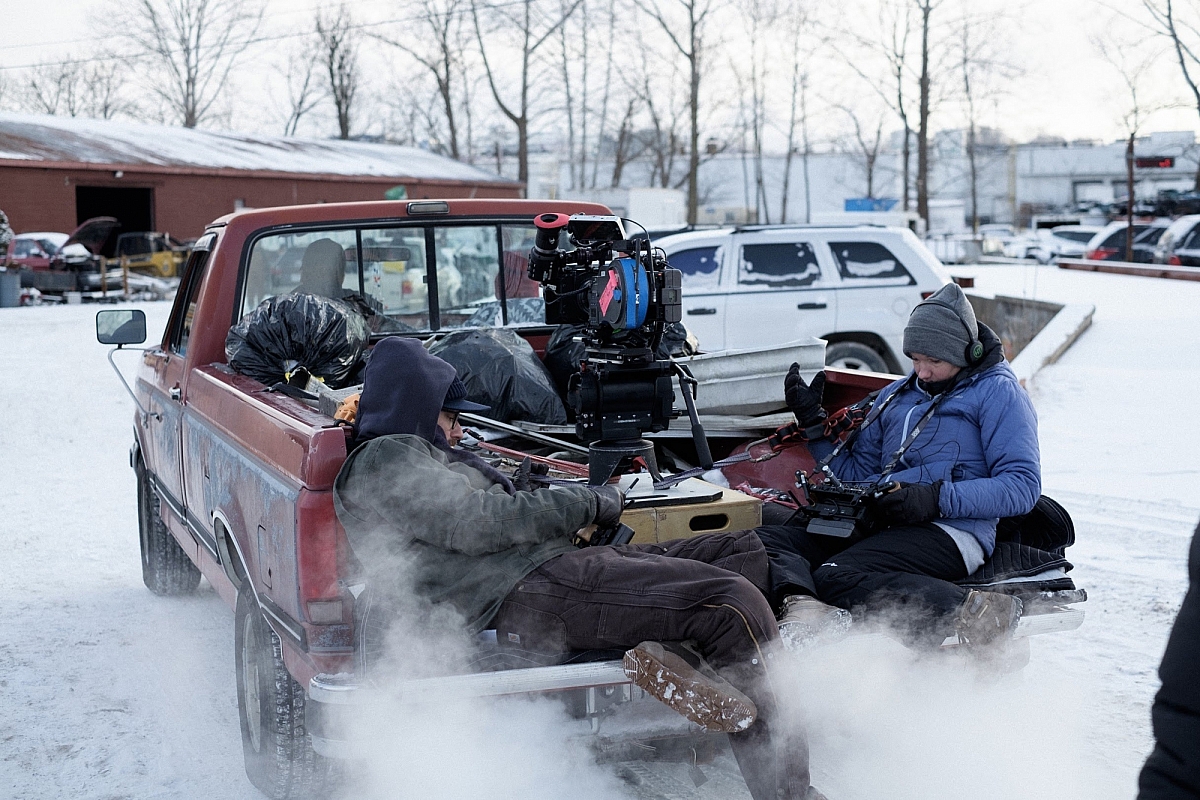
Cinematographer Dustin Lane and writer-director Nicole Riegel take a brief break during the 19 days of principal photography that took place in Jackson, Ohio (Riegel’s hometown), Chillicothe, Wellston, and Bainbridge.
The hometown connection assisted with the casting of locals. “There is a bartender in the film who plays the neighbour Vicky whom I have known forever and she is very much that character,” laughs Riegel. “I’ve been yelled at by her but she is such a sweetheart. We had these wonderful casting directors Karmen Leech, John Williams and Lani Thomison who specialize in casting nonprofessional actors or first-timers. They went to Jackson a few weeks before filming and ingratiated themselves in the town visiting Olive Gardens, diners, food plants, biker bars, and Walmarts. For the factory workers, Karmen, John and Lani met with 250 or 300 people, put them on tape, and asked them to tell the story of their life in about 30 seconds; they sent tapes to me of the most interesting ones that fit the fictionalized versions of the characters in the film and we narrowed it down to about 50 to 100 people. We picked a day where people could meet me for a couple of minutes and then we would make our decision.”
Securing the necessary financing was made more difficult with Riegel desiring to shoot on film out on location with large groups of unprofessional actors. “I will say that unfortunately people are less willing to give money to female filmmakers which shouldn’t be the case because they’re brilliant storytellers,” notes Cobb. “Nicole’s story was one that I felt strongly about and wanted to support her. We found amazing partners in our financing. We got lucky. Nicole found them in Level Forward, which wanted to champion voices that don’t usually get to tell their stories.” The financial struggle almost led Holler to be shot in summer rather than winter. “I wanted winter so badly and many people along the journey were against it and said, ‘No summer. It would be too cold.’ Then others were saying that summer would be too hot and that fall would have continuity issues with the leaves changing. I’m like, ‘I’ll make this film in fire.’ It was getting a bit ridiculous that we’re finding something wrong with every season. During this five-year journey I became so desperate that it almost came together in summer.”
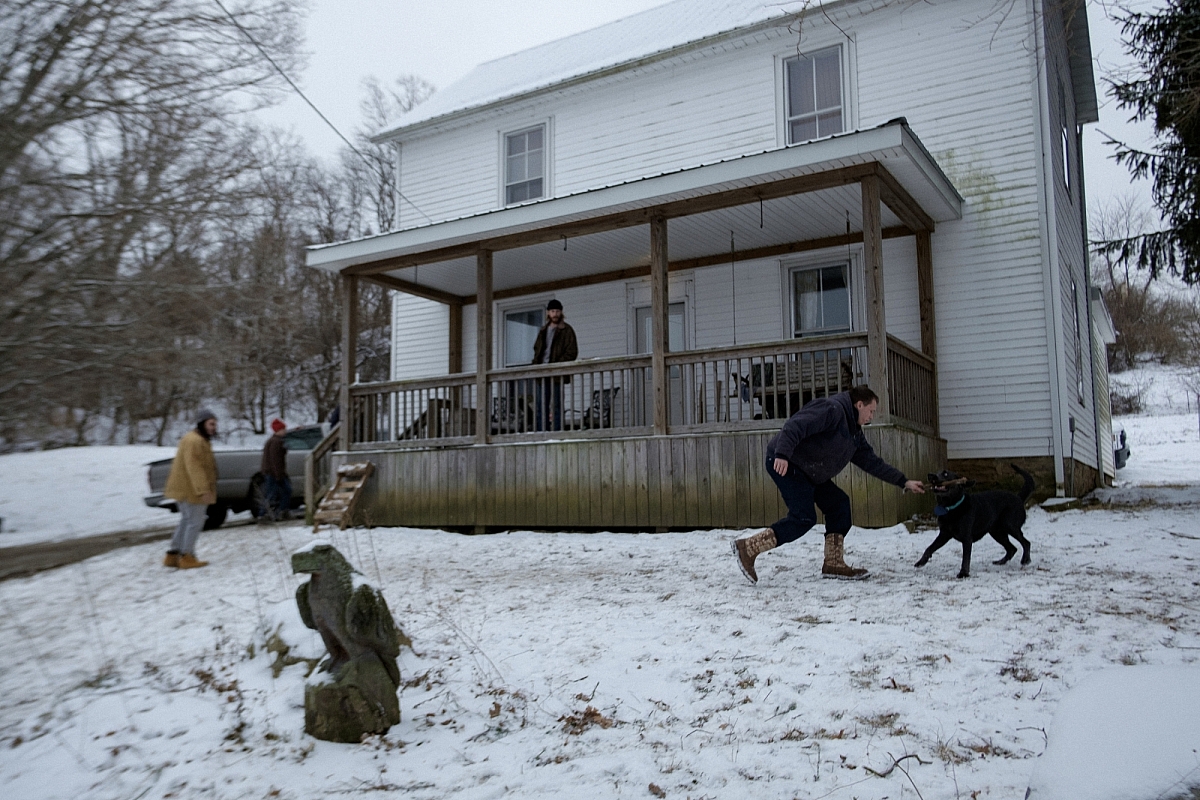
At one point Holler almost got shot during the summer but Nicole Riegel got her wish for a winter production.
Because the heart of the story is the strong bond between siblings Ruth and Blaze, professional actors were cast for the roles. “Jessica Barden was on the film for almost two years before we made it,” explains Riegel. “She was unknown at the time and subsequently did the Netflix show The End of the F…ing World and people started noticing her. I remembered worrying, ‘You’re getting too famous! I can't have you in the movie anymore.’ Then we went off to shoot the movie and it was okay. I wish that people talked more about Gus Halper. I’m so proud of his performance. He is nothing like this character. In real life Gus is a musical theatre guy born and raised in New York City. I found him out of auditions in New York City. When we think of guys in the Midwest or where I’m from, as these good old boys, I wanted someone who could fit in that world but be a more empathetic sensitive type of brother for the role. Gus had that.”
Editor Kate Hickey (High Fidelity) was involved from the script stage onwards giving advice as to the kinds of shots that would be needed. “Kate is vital to my process, and it was six months in and out of editing,” explains Riegel. “I go in and watch the first cut. Usually, we need to drink afterwards because it’s so terrible! The movie is so long and shapeless during that first week in the editing room. It doesn’t feel like anything. It can be devastating. There are two whole storylines that are not in the film. We’re crafting every tiny eye movement and facial tick. In ADR, we’re putting words in their mouth that they didn’t say on the film and reshaping an entire scene. We’re doing so much in the edit. Pamela Adlon [portrays the mother of Ruth and Blaze] said something to me during the shoot that I will never forget which was, ‘Production is where you make your bricks and post is when you take them and build the house.’ I thought that was a beautiful way of putting it.”
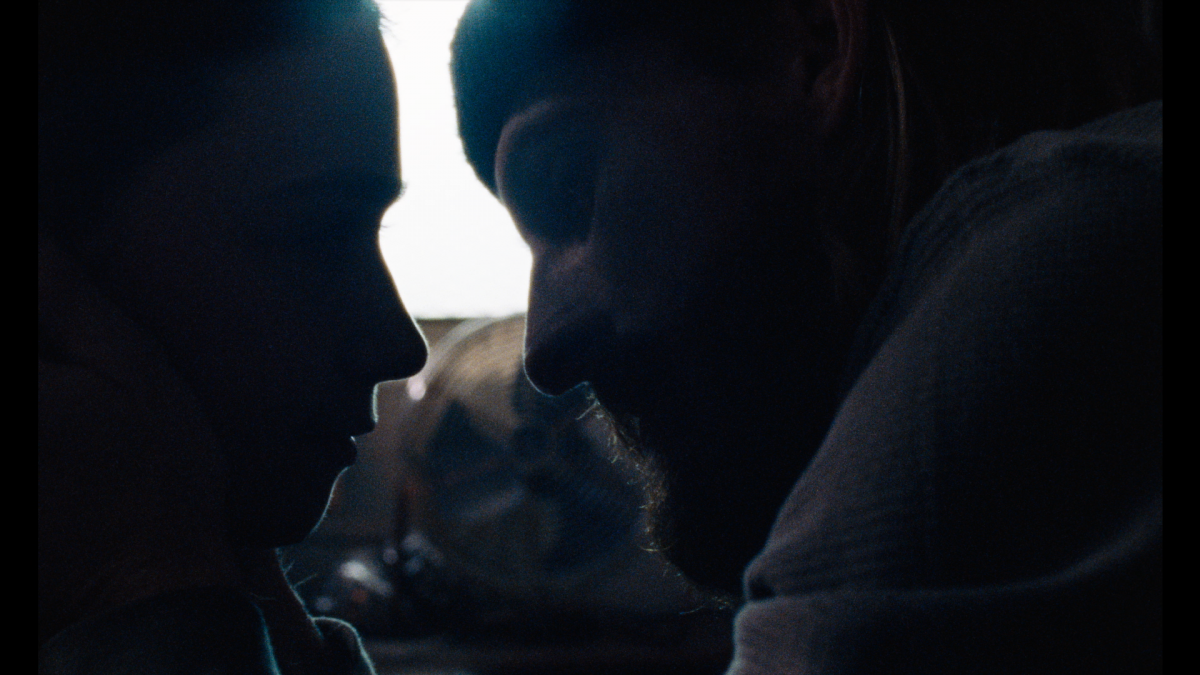
Ruth (Jessica Barden) has to navigate through the scrap metal business which features dangerous characters such as Hark (Austin Amelio).
Sound design was done by Monkeybone Audio while the score was composed by Gene Back (Cowboys). “I just wanted the natural sounds of the world,” remarks Riegel. “The biggest challenge with the sound was the score. I wanted a bold, almost classical score because a lot of scores for films like this are acoustic guitars. I felt like that’s what people would expect. I’m sensitive to people stereotyping the region. You can play strings or violin and cellos in different ways; they’re instruments that emote. It brings a dignity and elegance to a region that we don’t think of as elegant.” An emotional experience for Riegel was being able to see her initial image become a cinematic reality. “It was cathartic to get that out of my head. We didn’t know if it was going to snow. Later we were hit with a blizzard so be careful for what you wish for! That was the first thing we filmed. I love how the camera moves with her. I love how fast it is. The snow started falling down and hitting the lens perfectly. It was like a magical moment.”